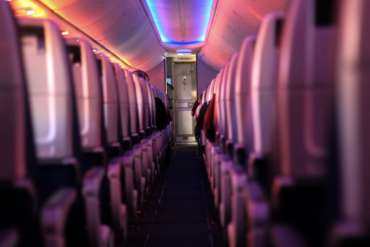Recently, the New York Times published an article titled, ‘Never a Reason to Take Off Your Socks’: A Flight Attendant’s 12 Etiquette Rules. It made some good points and the comments are always a a source of inspiration and foolery.
I wanted to chime in and reflect or counter on some of the points mentioned as I love to travel and have had my fair share of issues as a solo traveler. Those issues include being asked to accommodate families and overall just being bothered as I’m by myself. So here goes…
As the summer travel season picks up pace, it becomes essential to strike a balance between personal comfort and thoughtfulness towards fellow travelers. The New York Times article discussing travel etiquette and the experiences shared by readers prompts us to reflect on some socially acceptable norms when flying, both domestically and internationally.
One of the first points raised in the article is the right to recline. Indeed, everyone has the right to recline their seat within the confines of their designated space. However, it is crucial to exercise this right with consideration for those seated behind you. A sudden and aggressive recline can greatly impede the comfort of the person sitting in the row behind, making it difficult for them to use their tray table or find a comfortable position. By reclining gradually and checking with the person behind, we can find a balance between personal comfort and respect for others.
Another aspect mentioned is the allocation of armrests in the middle seat. It is generally agreed upon that the middle seat passenger should have access to both armrests, as they often face the most discomfort due to limited space. By relinquishing the armrests as an aisle or window seat occupant, we can contribute to a more comfortable journey for those sitting in the middle.
The issue of seat switching is also addressed in the article. While it is true that passengers have the right to refuse a seat switch, being open to accommodating requests can foster a more pleasant atmosphere onboard. Some travelers may have genuine reasons for requesting a seat change, such as sitting with a family member or addressing a medical condition. If such requests are made politely and without inconvenience, it can go a long way in making someone’s journey more comfortable. Of course, individual circumstances and preferences may vary, but a willingness to assist fellow passengers can create a sense of camaraderie and understanding.
Additionally, it is worth highlighting some broader norms that contribute to a harmonious travel experience. Respecting personal space, using headphones when listening to audio or watching videos, and keeping conversations at a considerate volume are all essential components of being mindful of others in close quarters.
While these norms help guide our behavior as travelers, it is important to recognize that there may be cultural variations and individual circumstances that influence the interpretation of etiquette rules. Being open-minded, patient, and empathetic towards fellow passengers can help create a positive and inclusive environment for everyone aboard.
Striking a balance between personal comfort and thoughtfulness towards others is crucial when traveling by air. Recognizing and adhering to socially acceptable norms, such as reclining seats with consideration, offering middle seat passengers access to armrests, and being open to seat switch requests, can greatly enhance the travel experience for everyone involved. By fostering a culture of respect and understanding, we can contribute to a more pleasant journey for ourselves and our fellow travelers.
Read the New York Times article here: https://nyti.ms/4333q8y

